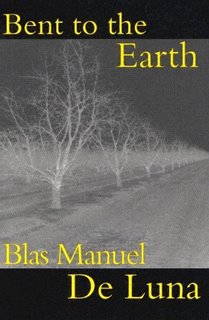 Monday’s post from Daniel Olivas…
Monday’s post from Daniel Olivas…Marta Acosta’s debut novel is Happy Hour at Casa Dracula forthcoming this summer from Simon & Schuster Pocket Books. It's a comic novel about a young woman who desperately yearns to be taken seriously as a writer, human being, and girlfriend. And, yes, vampires do figure in the plot. Acosta was born and raised in the San Francisco Bay Area. At six, she learned to read and she liked it so much that she still reads today. She remembers her excitement when she was seven and her father brought home a box of used books. Growing up with three brothers, Marta learned how to throw a ball, how to express an opinion, and how to tell a joke. She received a degree in English Literature and Creative Writing from Stanford University and is a frequent contributor of humor, gardening and design columns to The San Francisco Chronicle and The Contra Costa Newspapers. She's had too many jobs to recall, none of which she enjoyed as much as writing at home. Marta lives with her husband, son, and ancient dog. An avid gardener, she likes independent films, funny novels, loud music and lively conversation. She is highly skeptical about the paranormal, even though she can tell when her mother is calling by the way the phone rings. You may visit her at her website.
POETRY AND ART SHOW: “Poetas y Pintores: Artists Conversing with Verse” is a collaborative project sponsored by the National Endowment of the Arts, initiated by the Center for Women's InterCultural Leadership at Saint Mary's College and the Institute for Latino Studies at the University of Notre Dame. The interdisciplinary project will present the work of both established and emerging poets as inspiration for the creation of original artwork, allowing Latino/a artists to enter into "dialogue" with the work of Latino/a poets. The inaugural exhibit opens at the Moreau Art Galleries at Saint Mary's College, January 27, 2006. Subsequent shows are slated for New York City, Chicago, and Los Angeles. For more information, visit the show’s website.
UCLA CHICANO STUDIES RESEARCH CENTER EVENT ANNOUNCEMENT: The UCLA Department of Political Science Recruitment Committee for Race, Ethnicity & Politics invites you to a Candidate Presentation by Lisa Garcia Bedolla of University of California, Irvine:
“Fluid Borders: Latino Power, Identity, and Politics in Los Angeles”
Monday, January 30, 2006
12:00 noon - 1:30 p.m.
UCLA, 4357 Bunche Hall
A light lunch will be provided
Drawing from one hundred in-depth interviews, Lisa García Bedolla compares the political attitudes and behavior of Latinos in two communities: working-class East Los Angeles and middle-class Montebello. She finds Latina women the most engaged in politics and considers how the experience of social stigma affects the collective identification and political engagement of members of marginal groups. Asking how collective identity and social context have affected political socialization, political attitudes and practices, and levels of political participation among the foreign born and native born, her analysis suggests resources other than simply socioeconomic status may play an important role in political engagement within marginal communities.
To learn more about the UCLA Chicano Studies Research Center, visit its website or send an e-mail.
ENGAGING AND LIVELY: Lidia Torres’s book of poems, A Weakness for Boleros (Mayapple Press), has recently been reviewed by NewPages. The reviewer, Kathy Fretz, says, in part:
“Engaging and lively, the reader is introduced to Torres’s passion for her culture and music. Her keen eye and ear for crafting beauty out of the ordinary is showcased throughout as are her lyricism. Sentimental without being maudlin, she touches on themes of death and love, taking the reader on a journey at once mournful and celebratory.”
NUEVO LIBRO: Rigoberto González reviews a new novel by Margarita Cota- Cárdenas, Sanctuaries of the Heart/Santuarios Del Corazon: A Novella in English And Spanish (University of Arizona Press). González is an award-winning writer and associate professor of English and Latino Studies at the University of Illinois at Urbana-Champaign.
OPTIONED FOR FILM: Isabel Allende’s children's trilogy, beginning with City of the Beasts (HarperTrophy), to Walden Media, with Barrie Osborne (The Lord of the Rings) producing, and David Rothenberg adapting and co-producing.
All done. So, until next Monday, enjoy the intervening posts from my compadres y comadre at La Bloga. ¡Lea un libro!



